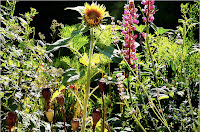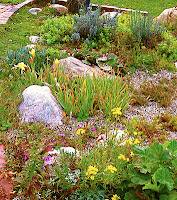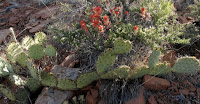The most unusual and decorative plants are not always easy to afford or find in your local garden center. You may need to go online to specialty catalogs to find some. These plants are often variegated or striped. Some have spotted leaves and come in hard to find bloom colors. Some of the grasses and ferns are small or very large varieties that you may have never seen before. The lollipop allium, canna lily bulbs and ornamental Fritillaria are showy plants grown from bulbs. Yucca, globe thistle and tall pampas grasses are beautiful additions to a border or circular garden as a feature plant. Variegated dogwood, cottoneaster, and euonymus all are very striking and available in many colors. There are whites or golds and will creep and crawl up walls, foundations and fences.
Japanese painted ferns come with silvery lacy fronds and some have maroon stems. Plant them between all green Hosta in a shady border for impact. There are also many Hosta with variegated leaves. Planted in large drifts you can really make a striking effect as a backdrop for colorful plants placed in front of the green background.
Height, shape, texture and colors add layers: grow some perennials for a different and unusual garden styles. Plants with large blooms as well as interesting foliage are a great way to make a statement. The giant iris are popular plants for the back of borders because many grow at least 24 to 36 inches tall. Their spikes also come in variegated form with vertical stripes in white or yellow. They grow in natural fan shapes with pale purple blooms. Woody herbs like Lavender, Artemesia and Russian Sage have gray green foliage and upright blooms. Their color and form add height and scent to gardens. Shrubs with large ornamental blooms like hydrangea, snowball bush, Oriental poppy, lilac and Rose of Sharon are worth planting for show in borders.
Ornamental trees: Magnolia, Japanese maple and Purple Sandcherry add beautiful blooms and color. Espalier for trees or woody plants are very decorative. It is the practice of controlling growth by pruning and tying branches to a wall, fence or wood frame. Apples, pears and grapes can be shaped into formal patterns that radiate out horizontally along wires or attached using hooks. Training trees this way is very attractive, allows you to grow fruit in a small space and increases the production amount of the fruit. You can as also grow low growing berries by creating a hedge or border with support posts, a trellis, strong wire or an existing fence. Shapes can be fans, square, so shaped, v shaped or circular
Growing grapes on arbors, pergolas or fences can save space as well as provide some privacy. You can train any type of vine to crawl along and cover an eye sore like utility boxes, compost areas or an unsightly neighbors back yard. Other vines like Trumpet Vine, Wisteria, Roses work well. Living Green Walls are becoming very popular to divide a space in a garden, Be sure to construct a strong frame using metal pipes for your trellis to grow and support the vines you wish to plant.























